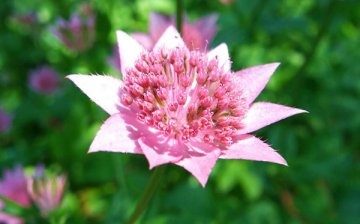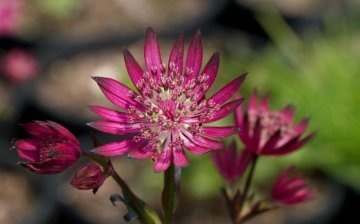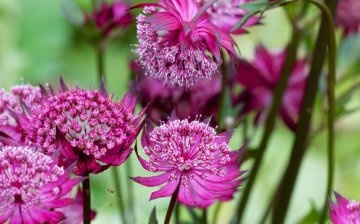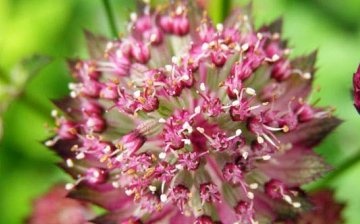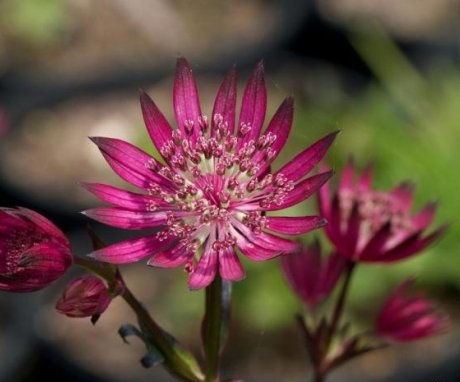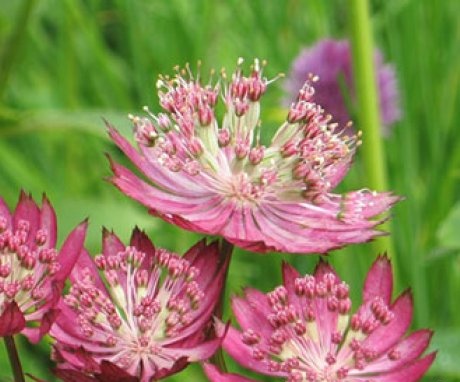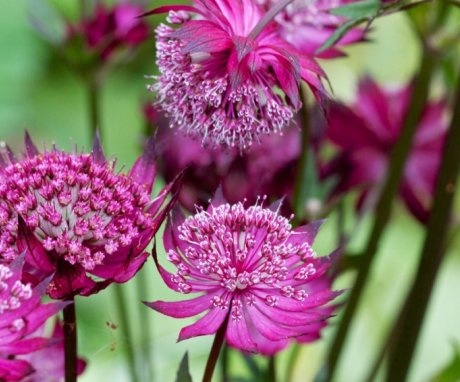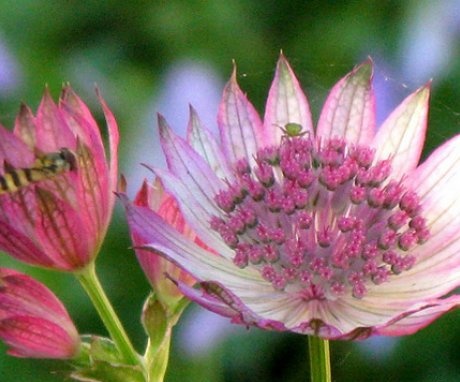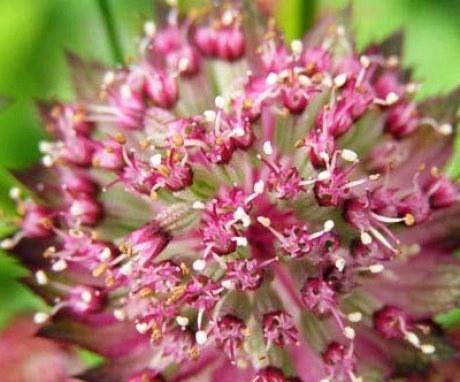Astrantia in the garden: planting and caring for a perennial
Unusual shape, various colors of the asterisk astrania, collected in umbrellas, as if they came to us from space, the astral. The plant is widespread in the wild in Europe and Asia, but has recently received the attention of botanists. And the breeders have tried, bringing out a large number of flower species that amaze with their original shades.
Astrantia in Russia is called a star, and the truth is, it seems that someone, flying by, scattered these shining stars on the ground. The plant attracts not only by the shape of the flower of a person, but also by insects - a pleasant smell, being an excellent honey plant. It is easy to grow a flower: it is not afraid of frost, drought, rarely succumbs to diseases.
Content:
- Features of the structure of the plant
- Breeding methods, planting flowering shrubs
- Astrania care tips
- Diseases and pests of a garden plant, how to deal with them
- Astrantia in traditional medicine
Features of the structure of the plant
Sprawling perennial bushes from fifteen to eighty centimeters in height are covered with carved leaves in spring. In June, umbrellas of small star-shaped flowers appear on the branches, which are located on a large leafy star. At the end of summer, miniature boxes with fruits appear on the plant. After ripening, the two-seed crumbs fall to the ground to give life to new ones. astrantia.
Breeders have bred many types of flowers with large and small inflorescences.
Their tones have red-cherry shades, and white-pink, and greenish. In this case, the umbrellas of small stars differ from a large star either in color saturation or in its pallor.
The flower is used in bouquets, as it retains its freshness for a long time. And thanks to the rigid shape of the petals, it dries without losing it, which is used in winter compositions. Anyone who wants to decorate their site with this plant will never regret it.
Breeding methods, planting flowering shrubs
There are several methods for propagating decorative perennials:
- Seeds for sowing are best collected from the plant in September, dried, and sown directly into the ground in October. When buying seed, it is planted in early spring. Seedlings appear in two to three weeks. They must be thinned out so that the distance between the plants is at least thirty centimeters.
- Reproduction dividing the bush it is best done after the leaves die off in the autumn, and in the spring - before they bloom. The rhizome is divided neatly with a sharp knife or saw.
- For reproduction cuttings you need to take root rosettes, placing them in the ground for rooting. After that, they are planted in a permanent place. This operation can be performed both in spring and autumn.
When planting ornamental shrubs, you need to choose a place where there is sun or partial shade. Light exposure does not particularly affect the flowering of the plant. Astrantia is also undemanding to soil. Too poor soil only will not allow it to bloom profusely. The plant grows quite strongly, so you need to plant it away from your relatives.Adult bushes have a girth of about half a meter.
Astrantia loves the constancy of the place of residence. If not transplanted, it will bloom for ten to twelve years. The first flowering can be admired in the third year of the star's life. In the garden, the flower is used in compositions on alpine slides, flower beds, in the shade of spreading trees.
Astrania care tips
Astrantia does not require special care, but there are some rules that must be followed:
- Watering the plant during a favorable season can be done once a week, increasing the amount of watering in hot summer.
- Around the bushes, it is necessary to loosen the soil and mulching... Sand or loose humus is suitable as mulch. This will help retain moisture, nutrients for plant nutrition.
- In order to increase the flowering time of the plant, faded umbrellas must be removed.
- Winter frosts are not terrible for Astrania, so there is no need to shelter it. Only young flower sprouts can be insulated with spruce branches.
- Plant feeding is carried out depending on the soil where it grows. Soil fertility is supported by the introduction mineral fertilizers for flowering plants. After feeding, the starlet is watered abundantly.
- When the bush grows, you can tie it to the supports.
Even with a minimum of attention, you can get maximum pleasure from the contemplation of cosmic beauty.
Diseases and pests of a garden plant, how to deal with them
Astrantia is distinguished by its high resistance to diseases... In some cases, shrubs can rot during humid hot summers with plant development on heavy acidic soils. To avoid trouble, you need to spray the plant with a solution of copper sulfate before flowering stars or after dropping leaves.
The main pests of perennials include slugs. It is an unpleasant pest that loves to feed on the young leaves of Astrania. There are several ways to destroy the pest:
- Spices are a good repellant for naked slugs - rosemary, cilantro, parsley... Scattering them around ornamental bushes, you can say goodbye to the pest.
- A container filled with beer will attract drink lovers - slugs, and they will find their death there by drowning in a can.
- If we talk about insecticidal preparations effective against slugs, then these are Ferramol, Meta. They are sprayed with ornamental bushes two to three times at weekly intervals.
- Dry drainage under the bushes of Astrantia will help get rid of pests.
The flower will attract the attention of many because it is resistant to pests and diseases.
Astrantia in traditional medicine
Starfish leaves are used in folk medicine, as they contain many trace elements, organic acids, flavonoids, steroids. The infusion from the plant helps to strengthen the human body, save it from intoxication, clearing the liver of harmful substances, toxins.
A wonderful plant astrantia will not only decorate the corners of your garden, but also bring health to the owners.
A decoction of the root stimulates the gastrointestinal tract, improving the digestion process. You can prepare it from two teaspoons of raw materials, brewed with a glass of boiling water. After that, the solution is boiled for another five minutes, and then, after cooling and straining, one glass is consumed. It is better to start preparing raw materials after the flowering of Astrantia. Having dug up the root, it is thoroughly washed, cut into thin strips, and put to dry in a ventilated room. After that, it is ground with a coffee grinder.
More information can be found in the video:



